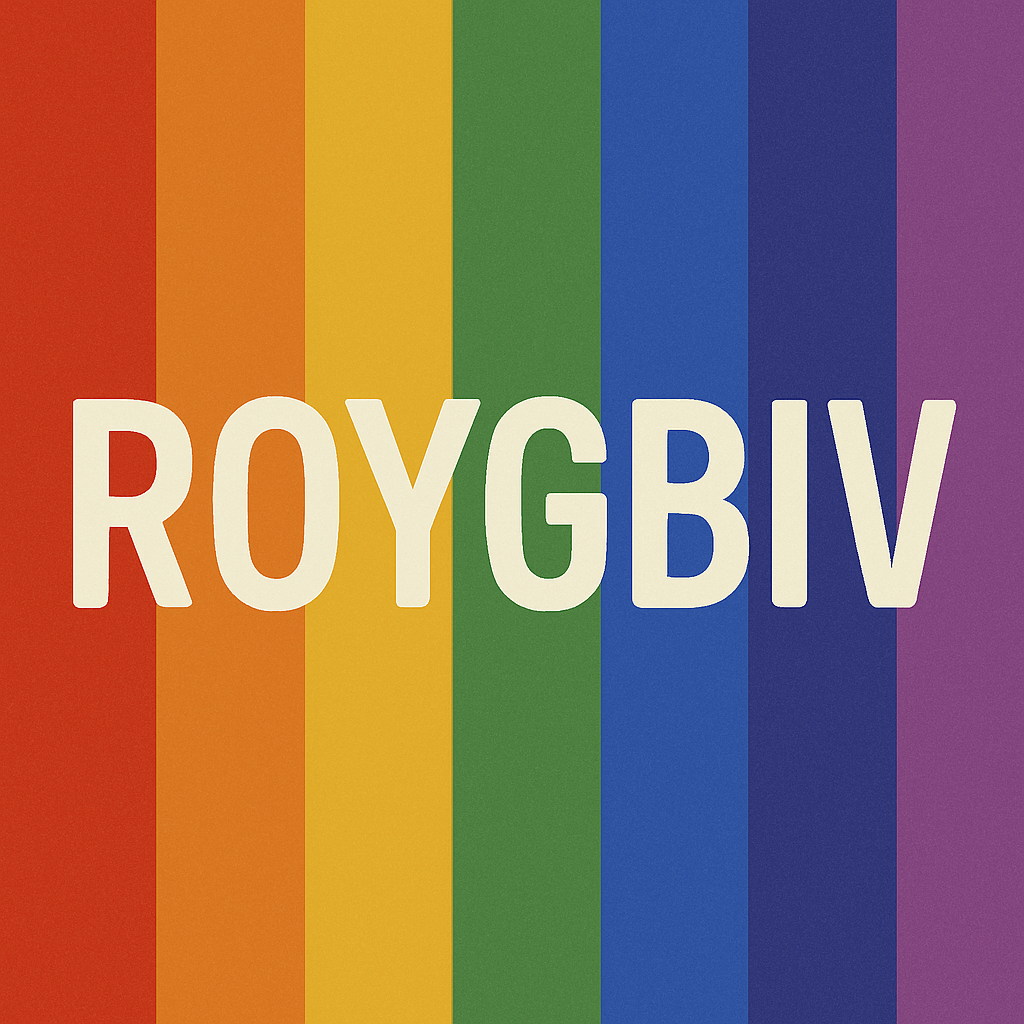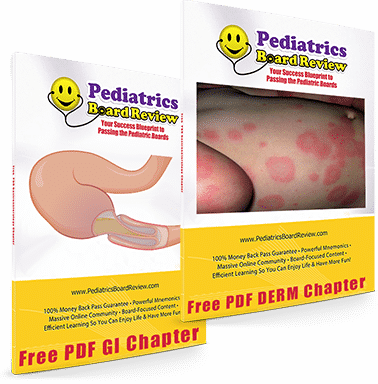Creating Memorable Pediatric Mnemonics
Pediatric Mnemonics that Stick
 Creating pediatric mnemonics can be a lifesaver for the boards. Did you know that most memory champions in the world do NOT have a photographic memory? They actually TRAIN their brains to remember lists, names, and other random facts. So trust me when I say that you can too!
Creating pediatric mnemonics can be a lifesaver for the boards. Did you know that most memory champions in the world do NOT have a photographic memory? They actually TRAIN their brains to remember lists, names, and other random facts. So trust me when I say that you can too!
As doctors, most of us were in the top 10% of our class until we hit medical school, but that doesn't mean it’s easy for us to retain the vast amounts of knowledge necessary to pass the pediatric boards. I remember the overwhelming feeling of being crushed by all of the information I was being bombarded with during my studies.
It wasn't until I learned how to create pediatric mnemonics and memory aids that I was finally able to feel comfortable with the idea of housing all of that information in my brain. The mnemonics I created were essential in helping me retain information and pass the USMLE Step exams as well as the pediatric initial certification exam.
So, unless you’ve got a photographic memory, I’d highly recommend spending some time learning memory techniques.
“The [PBR] mnemonics were stellar, if not a little goofy , but that just added to their utility. I will likely remember some the mnemonics for the rest of my life, especially the autosomal dominant diseases. – Dr. Kristen Macleod” – Read Kristen's full testimonial by clicking HERE.
WHAT ARE MNEMONICS?
 In a nutshell, mnemonics are memory aid devices that can help you to remember difficult to absorb information.
In a nutshell, mnemonics are memory aid devices that can help you to remember difficult to absorb information.
Does the name ROY G BIV sound familiar? The name is a mnemonic to help students remember the colors of the rainbow (red, orange, yellow, green, blue, indigo and violet).
Canadians or the English may have learned the same information with the phrase, “Richard Of York Gave Battle In Vain,” in which the first letter of each word corresponds with the first letter of each color of the rainbow.
There’s really no right or wrong way of doing this. It's all about doing what works for you.
HOW DO I CREATE PEDIATRIC MNEMONICS
There are A LOT of strategies that can be used to create mnemonics. Here are a few favorites:
ACRONYMS
 Take an existing list of words, or a phrase, and create a new word or phrase that stands for it. I think of acronyms as being those memory aids that help me create mnemonics for a list of words or a phrase that is in a specific order. For example, ROY G BIV is an acronym for the spectrum of colors in a rainbow in the order they appear. Also, NATO stands for the North Atlantic Treaty Organization.
Take an existing list of words, or a phrase, and create a new word or phrase that stands for it. I think of acronyms as being those memory aids that help me create mnemonics for a list of words or a phrase that is in a specific order. For example, ROY G BIV is an acronym for the spectrum of colors in a rainbow in the order they appear. Also, NATO stands for the North Atlantic Treaty Organization.
ANAGRAMS
I use these to help me remember me remember a list of letters that CAN be jumbled up and rearranged. Usually, I’ll take the first letter of several words and then rearrange them into a single word or phrase. For example, HOMES is an anagram that was created from the first letters of the names of the Great Lakes. Also, when I was trying to remember the most commonly tested autosomal recessive disorders, I took the first letter from each disorder and created the following unsavory phrase: PAT HAS WAK GAS. I then added a mini-story as well to finish it off. I've decided to include the entire section from PBR for demonstration purposes, though this mnemonic is more of a “blended” mnemonic:
AUTOSOMAL RECESSIVE MNEMONIC
This autosomal recessive mnemonic is strange but easy to remember: “PAT HAS WACK GAS which made me HURL in the BACK SEAT of an AUTOmobile!” If you are unfamiliar with PAT, s/he is unique Saturday Night Live character. Possibly male… possibly female… definitely full of WACK GAS that would make you HURL in the BACK SEAT of an AUTOmobile!
* IMAGE OF PAT: www.pbrlinks.com/AUTORECESSIVE1
- P = PHENYLKETONURIA (aka PKU)
- A = ALPHA-1-ANTITRYPSIN DEFICIENCY
- T = TAY-SACHS DISEASE
- H & HURL = HURLER’S SYNDROME
- A = ATAXIA TELANGIECTASIA
- S = SICKLE CELL DISEASE and the THALASSEMIAS
- W = WILSONS DISEASE
- A = ALPERS SYNDROME (AKA Progressive Sclerosing Poliodystrophy)
- This is a progressive neurologic disease. Patients do not meet their milestones and are noted to have ataxia, cognitive deficits and seizures. Also have liver disease. Die by 10 years of age.
MNEMONIC: The symptoms of ataxia and cognitive deficits are remarkably similar to how you would feel if you got ALTITUDE sickness in the Swiss ALPS!
- C = CYSTIC FIBROSIS
- K = KARTAGENER SYNDROME: = Immotile Celia & Sperm. Lung issues and infertile. “while playing KAR-TAG, atul’s CELICA became immotile”
- G = GALACTOSEMIA
- A = see “A” disorders above
- S = see “S” disorder above
* BACK SEAT = May help you remember that this mnemonic deals with recessive disorders.
* AUTOmobile = AUTOsomal recessive.

I don’t mention this in the book… but there was a girl named Pat that I met once who I inserted into my mental image of Pat! I feel a little bad admitting it, but I don’t think she’ll ever find out 🙂

Watch Your Free Video Training Session Now
Learn HOW to Answer Board Style Questions &
Be a Better Test Taker
IMAGES
Create an image of something that reminds you of the idea you’re trying to remember. For example, here’s a section from the PBR along with multiple forms of mnemonics, including a mnemonic image:
APERT SYNDROME (aka APERTS SYNDROME)
Patients with Apert syndrome (aka Apert’s syndrome) have an early cranial suture closure along with bilateral syndactyly (fused digits). May also have choanal atresia and a cleft palate.
* (DOUBLE TAKE) NAME ALERT/MNEMONICS
Apert Syndrome, Alpers Syndrome, and Alport’s Syndrome can be confused because of their names. Within the autosomal dominant mnemonic, “Ape-alachian” mountains are used. The Appalachian Mountains are in North America so keep that setting in mind as you go through the mnemonic again. For Alpers Syndrome, just remember that the Swiss ALPS are nowhere close to here! Alport Syndrome can be a little confusing. It is more commonly an X-linked Dominant disease but can be autosomal dominant as well.
I recommend memorizing it as an X-linked disease. The mnemonic, “At Al’s PORT, X marks the spot where the boats have to dock,” can help you remember that Alport Syndrome is X-linked. If you are able to imagine that the X is made out of MINTS, it may help you remember that this is a disease that can be X-linked or autosomal dominant. (MINTS relates to another mnemonic from the PBR Core Study Guide)
IMAGE: https://www.pbrlinks.com/apert1
IMAGE: (Try to focus on the images and move one) https://pbrlinks.com/apert2
MNEMONIC: APE-alachian mountains in the intro mnemonic for autosomal dominant disorders
MNEMONIC: “A PEAR Syndrome,” in which the head is shaped like a PEAR due to early suture closure. Now imagine the pear-shaped head being held by hands that look like a duck’s BILATERAL webbed hands.
MNEMONIC: (image)

That image is one of the pediatric mnemonics from our Core Study Guide. It's a pencil drawing of my own master creation that I used during my own studies… and I remember that it HELPED on the exam!
TUNES, POEMS, AND RHYMES
If you can create a catchy jingle or rhyme to help you remember something, it’s possible that will stick with you forever. Ever heard this one, “In 1400 and 92, Columbus sailed the ocean blue!”?
STORIES
I LOVE this one. Initially, this is one of the harder strategies to master, but with practice, it gets easier. Although it’s the hardest one to implement, I believe it’s also the MOST effective and versatile means of creating medical mnemonics. It just takes some imagination. For example, below is a story straight from the Pediatrics Board Review Core Study Guide that helps me remember the developmental milestones of an 18-month old. PLEASE read it all the way through.
Developmental Milestones Chart for 18 months of age
(formatted as a list here for this article)
– AGE: 18 months. “voter”
– LANGUAGE: 10-15 words. Asks for mom or dad. Says “hi,” “bye,” and “please.”
– GROSS MOTOR: Takes off hat, mittens and socks. Carries a doll. Runs stiffly. Walks upstairs with help (18-24 mo). Toss ball underhand. Climb into an adult chair.
– FINE MOTOR: Self-feeding with a spoon, or sp?n (messy). Turn pages (3 at a time). Stack 4 cubes. Scribble.
– COGNITIVE: Recognizes self in mirror/photos and objects in a book. Object permanence (now seeks out hidden objects). Trial and error. Recognizes named body parts. Follows 1-step commands without gestures (15-18 mo). Understands 75-100 words.
– SOCIAL: Share toys with parents. Play alone. Imitates simple chores (vacuuming or sweeping).
– RED FLAGS: Not walking. No words.
MNEMONIC: 18 months = age at which a SPOON is used (which is usually shaped like an “8”). SP?N (note the 18 on its side)
MNEMONIC STORY
The PBR memory peg for the number 18 is VOTING (age in years when you can VOTE). Now imagine an 18-year-old African-American with dwarfism who lives with his parents. It’s an election year and he sees a commercial of “Uncle Sam” asking him to vote with ONE FINGER pointed directly at him (one-step command). That leads him to look at a book of presidential candidates and TURN 3 PAGES AT A TIME because that’s all he can do with his stubby fingers. He lives in the cold and windy city of Chicago and decides to vote for the Chicago candidate, Barack Obama.
VOTING
Then he goes to the polling site carrying a bobblehead doll of Obama. Once there, he NEEDS HELP GOING UP THE BUILDING’S STAIRS and goes ONE STEP AT A TIME. He’s being helped by a greeter who has been instructed to maintain a LIMITED VOCABULARY OF 10-15 WORDS so as not to influence any voters. The dwarf is then helped into the actual booth up FOUR BLOCKS/CUBES being used as stairs. He TAKES OFF HIS HAT & MITTENS and notices a mirror in front of him. He RECOGNIZES HIMSELF and has a huge smile showing his pearly white teeth as he prepares for his first voting experience. Suddenly, his stomach growls embarrassingly loud. He brought some chocolate pudding in his winter coat and quietly started eating it using a FIGURE 8-SHAPED SP?N.
TRIAL AND ERROR
His tiny dwarf tummy can only handle half of the pudding, so he tosses the rest of it behind him using an UNDERHAND FLIP/THROW. The pudding flies out of the booth and makes a huge mess on the floor. He then looks at the ballot. It takes him a few seconds, but he’s finally able to UNDERSTAND THE 75 – 100 WORDS/topics and manages to vote successfully for the first time using TRIAL & ERROR. Just as he’s about to leave, he is asked to help SWEEP up his mess of pudding. Carrying his bobblehead doll, he goes home. As a doll carrying 18-year old dwarf, he’s somewhat of an outcast. He usually only PLAYS BY HIMSELF. Fortunately, he has loving parents. He doesn’t like anyone else, but he loves his parents and decides to SHARE his doll WITH HIS PARENTS when it’s their turn to go vote.
The PBR has developmental milestones mnemonics for every major milestone. Now imagine 2 pediatricians. One of them is trying to memorize the list of facts. Another is recounting the pediatric mnemonic story in their head a few times.
Who do you think will get through the chapter faster? And retain the information long enough to pass the boards?
THE SECRETS TO CREATING MEMORABLE MNEMONIC
 So how do you create amazingly memorable pediatric mnemonics? Make them…
So how do you create amazingly memorable pediatric mnemonics? Make them…
ABSURD… COLORFUL… FILLED WITH ACTION… CONTROVERSIAL!
While most of the pediatric mnemonics I created did make it into the PBR, there were definitely a few that I had to sensor or completely replace. The mnemonics that you’re going to find most memorable will be the ones that you can see, smell, feel, and act out or the ones that evoke an emotion or a laugh.
Ever seen someone taking a test with a smile on their face? They’re probably thinking of a mnemonic.
Not every mnemonic you read will work for you, but they will give you a framework to work within for creating your own.
If you’re in your pediatric residency, START NOW. Make notes and create pictures in the margins of your PBR! If you’re already in your pediatric practice, use some of your own patients’ stories to anchor parts of the mnemonics. Trust me… with every new pediatric mnemonic you read or create, it will become easier and easier to create new ones.
To read more tips on how to improve pediatric in-training exam scores or pediatric board scores, click here: “Can I Improve Pediatrics In-Training Exam Scores For Myself? Or For My Program?”
Do you have a pediatric mnemonic that has stuck with you since medical school? Or one that can help others pass the pediatric boards? Click REPLY at the bottom of the page and share it!



